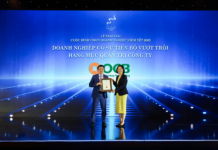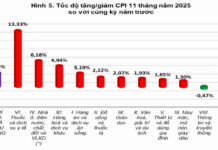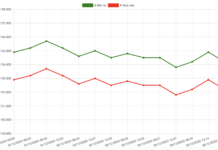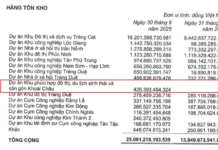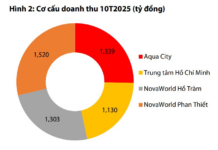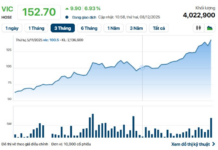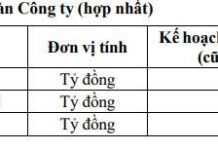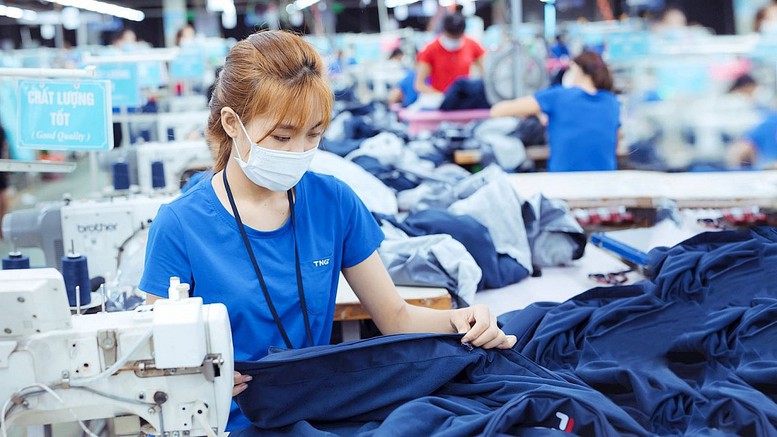
Vietnam’s Textile and Garment Industry is on Track to Meet its 2024 Export Target of $44 Billion
As evident from the surge in orders, the exports of Vietnam’s textile and garment industry are stabilizing after a tumultuous 2023. According to recent data released by the General Statistics Office, in the first ten months of 2024, textile and garment exports ranked fourth among the country’s top export commodities, reaching VND 30.572 trillion, a 10.5% increase compared to the same period last year.
Textile and Garment Exports Surge by 10.5% Year-on-Year
As one of the industry’s leading corporations, the Vietnam Textile and Apparel Association (Vinatex) reported a more than 7% increase in export turnover in the first nine months of 2024 compared to the same period in 2023. The corporation’s business results for the first three quarters achieved 73.6% of the plan, a 2% increase year-on-year, with profits reaching 80% of the plan and surging over 70% compared to the previous year. There is an optimistic outlook for Vinatex to meet its annual plan for 2024.
The leadership of Vinatex also noted that most of Vietnam’s key export markets for textile and garments are showing positive signs of recovery. Specifically, inflation in the US market in August 2024 stood at 2.5%, the lowest since March 2021, while retail sales for the month rose 2.11% year-on-year. Europe’s economy is also stabilizing, with inflation in August at 2.4%, the lowest since June 2021, and a slight increase in retail sales. In Japan, the GDP in the second quarter of 2024 rose 2.9% year-on-year and 7% from the previous quarter. Although inflation remains high, there is a gentle upward trend in household spending.
Thanh Cong Textile and Garment Company has received approximately 92% of its quarterly revenue plan for the fourth quarter and about 90% of its annual revenue plan for 2024. In addition to its traditional products, the company is focusing on environmentally friendly, recycled, and high-value products to enhance its product value chain. They are also exploring new markets while expanding existing ones and promoting the domestic market. With forecasts of improved textile and garment exports in the final months of the year and based on the level of order intake, Thanh Cong Textile and Garment Company is optimistic about achieving its annual plan.
Mr. Le Tien Truong, Chairman of the Board of Directors of Vinatex, attributed the recovery in the textile and garment export market over the past nine months to the shift of orders from China, Bangladesh, and Myanmar to Vietnam. Inventory levels in key markets such as the US, Europe, and Japan have been gradually decreasing compared to the previous year, and the upward trend in consumer demand has led to a resurgence in orders from partners.
“It is anticipated that orders for the garment industry in the fourth quarter of 2024 and the first quarter of 2025 will remain abundant, although unit prices have not seen significant improvements. In the long term, when the interest rate reduction policies in major markets positively impact their economies, creating stable employment and purchasing power, unit prices will improve,” said Mr. Le Tien Truong.
CPTPP Provides a Significant Boost
According to Mr. Vu Duc Giang, Chairman of the Vietnam Textile and Apparel Association (Vitas), free trade agreements have significantly contributed to the industry’s growth. The Comprehensive and Progressive Agreement for Trans-Pacific Partnership (CPTPP), in particular, has presented a significant opportunity for Vietnam’s textile and garment industry to access new markets such as Canada, Australia, and New Zealand. It has also helped businesses adapt to the purchasing practices of importers within the bloc, resulting in noticeable growth in exports to intra-bloc countries, especially in the Americas.
A report from the Ministry of Industry and Trade also highlights that the textile and garment industry is one of the sectors benefiting the most from the CPTPP agreement.
According to Vietnam Customs, the export turnover of textile and garment products to 10 CPTPP partner markets in July 2024 reached $660.11 million, a 22.58% increase compared to the previous month and a 10.86% year-on-year increase. In the first seven months of 2024, exports to CPTPP member countries increased by 6.94% year-on-year, reaching nearly $3.66 billion, accounting for 18.05% of the total export turnover of Vietnam’s textile and garment industry to all markets.
The strongest growth in textile and garment exports was observed in the Mexican market. Although it only accounted for 3.25% of the industry’s total export turnover to CPTPP member countries, exports to Mexico in the first seven months of 2024 surged by 31.84% compared to the same period in 2023.
Despite these positive results, Mr. Vu Duc Giang acknowledged that the domestic textile and garment industry faces intense competition when exporting to CPTPP markets. For instance, compared to Bangladesh, Vietnam has higher labor costs and faces obligations related to social insurance and healthcare. Bangladesh enjoys preferential tariffs as a least developed country, while Vietnam must fulfill comprehensive commitments in new-generation free trade agreements.
However, when comparing the competitive advantages of Vietnam and Bangladesh, Vietnamese textile and garment enterprises hold the upper hand due to their geographical location, large port system, and ability to produce diverse high-value products, such as suits, winter coats, and swimwear, with a rich variety of designs and quick delivery times.
Export Target of $44 Billion is Within Reach
The Vietnam Textile and Apparel Association believes that the industry’s export target of $44 billion for 2024 is achievable, given that the end of the year is the peak season for holiday and New Year orders.
Echoing this sentiment, the Institute for Strategy and Policy Research (under the Ministry of Industry and Trade) also suggested that the political crisis in Bangladesh, a major exporter of garments, could present an opportunity for Vietnamese garment businesses to expand their export markets. This crisis allows countries with strong textile and garment industries, including Vietnam, to fill the supply gap in the global market.
Despite the positive outlook, the Chairman of Vinatex advised caution, especially for businesses producing raw materials, which have faced challenges for the past 30 months. Enterprises need to tightly manage their production and business operations, closely following their plans, identifying and preventing risks, and avoiding any unexpected situations to achieve their annual plans and seize opportunities in 2025.






